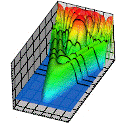Department of Physics and Astronomy: Publications and Other Research

Anthony F. Starace Publications
Document Type
Article
Date of this Version
7-8-2014
Citation
PHYSICAL REVIEW A 89, 063419 (2014); DOI: 10.1103/PhysRevA.89.063419
Abstract
We present an analytic model for the description of above-threshold ionization (ATI) of an atom by an intense, linearly polarized short laser pulse. Our treatment is based upon a description of ATI by an infinitely long train of short laser pulses whereupon we take the limit that the time interval between pulses becomes infinite. In the quasiclassical approximation, we provide detailed quantum-mechanical derivations, within the time-dependent effective range (TDER) model, of the closed-form formulas for the differential probability P(p) of ATI by an intense, short laser pulse that were presented briefly by Frolov et al. [Phys. Rev. Lett. 108, 213002 (2012)] and that were used to describe key features of the high-energy part of ATI spectra for H and He atoms in an intense, few-cycle laser pulse, using a phenomenological generalization of the physically transparent TDER results to the case of real atoms. Moreover, we extend these results here to the case of an electron bound initially in a p state; we also take into account multiple-return electron trajectories. The ATI amplitude in our approach is given by a coherent sum of partial amplitudes describing ionization by neighboring optical cycles near the peak of the intensity envelope of a short laser pulse. These results provide an analytical explanation of key features in short-pulse ATI spectra, such as the left-right asymmetry in the ionized electron angular distribution, the multiplateau structures, and both large-scale and fine-scale oscillation patterns resulting from quantum interferences of electron trajectories. Our results show that the shape of the ATI spectrum in the middle part of the ATI plateau is sensitive to the spatial symmetry of the initial bound state of the active electron. This sensitivity originates from the contributions of multiple-return electron trajectories. Our analytic results are shown to be in good agreement with results of numerical solutions of the time-dependent Schrödinger equation for He and Ar atoms. Comparison of our results with those of quantitative rescattering theory is also discussed.


Comments
©2014 American Physical Society. Used by permission.